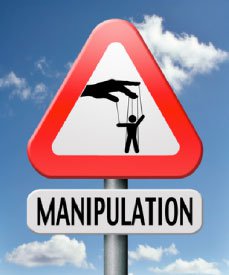Precious metals investors have learned a difficult truth in recent years. The best way to control a market is to put Wall Street in charge of it.
Gold and silver futures were created in the 1970s with the admitted purpose of “increasing volatility” in the markets and discouraging the ownership of physical bullion. It is a lesson that participants in other markets would do well to learn – specifically the Bitcoin and cryptocurrency markets.
Officials were terrified that free markets built around the supply and demand for tangible (not paper) gold and silver would wind up destroying confidence in the fiat dollar.
President Richard Nixon defaulted on the Bretton Woods agreement with other nations to redeem dollars for gold in 1971.
The confidence in the dollar would evaporate if the dollar price of gold spiraled higher.
The COMEX launched trading in gold and silver futures in the early 1970s. The gambit nearly failed by the end of that decade as the gold and silver priced in dollars began rising exponentially. But the Wall Street insiders behind the COMEX, with the support of federal regulators, managed to regain control.
They were able to pin the blame for price increases on the Hunt Brothers’ attempt to “corner the market” rather than on failing confidence in the dollar and the rapid price inflation going on at the time.
Through their control of the exchange, COMEX officials used a one-sided tool and stopped accepting buy orders in silver futures, only allowing orders to sell. What happened to the price in a “market” which allowed zero buyers was predictable.
The central planners at the Fed also stepped in. Chairman Paul Volcker raised interest rates dramatically, helping stem the tide of people dumping dollars and taking the shine off of gold.
Today, the tools for market control are even more varied and powerful. We’ve seen the advent of high frequency trading. Machines can see trades placed by retail investors and punish them by front running those trades.

 The bullion banks have developed ways to game the inventory system to avoid limits on the number of new futures contracts they issue. It is now routine for 100 ounces of paper metal to ride atop just a single ounce of actual metal during trading. There is no functional limit on the supply of paper gold and silver.
The bullion banks have developed ways to game the inventory system to avoid limits on the number of new futures contracts they issue. It is now routine for 100 ounces of paper metal to ride atop just a single ounce of actual metal during trading. There is no functional limit on the supply of paper gold and silver.
The same banks use newer technology, such as internet chat rooms, to coordinate price rigging in real time.
Only the most naive and uninformed still enter the futures markets expecting to get a fair shake in a long-term trade based on fundamental considerations – such as federal debt growing many times faster than GDP.
The metals futures markets are the opposite of free and fair. But, for now at least, Wall Street and their partners in Washington DC remain firmly in control. Gold prices are way below the 2011 highs. The U.S. dollar is, inexplicably, once again perceived as strengthening.
It isn’t hard to spot some parallels in the cryptocurrency markets.
Futures trading in Bitcoin launched in December, 2017. The uninitiated were thrilled by the prospect of institutional money flooding in. And it certainly has. Supporters just shouldn’t have assumed the money and influence would come from firms betting on higher prices with the best interest of Bitcoin at heart.
The list of exactly what traits Bitcoin and gold have in common is controversial. But there is at least one thing most sound money advocates can agree on: Bitcoin and gold share the animosity of bankers and politicians.
We won’t know the real price of either asset until both of those parties no longer control price discovery via exchanges they run, rig, and regulate.

 Clint Siegner is a Director at Money Metals Exchange, the national precious metals company named 2015 "Dealer of the Year" in the United States by an independent global ratings group. A graduate of Linfield College in Oregon, Siegner puts his experience in business management along with his passion for personal liberty, limited government, and honest money into the development of Money Metals' brand and reach. This includes writing extensively on the bullion markets and their intersection with policy and world affairs.
Clint Siegner is a Director at Money Metals Exchange, the national precious metals company named 2015 "Dealer of the Year" in the United States by an independent global ratings group. A graduate of Linfield College in Oregon, Siegner puts his experience in business management along with his passion for personal liberty, limited government, and honest money into the development of Money Metals' brand and reach. This includes writing extensively on the bullion markets and their intersection with policy and world affairs.



